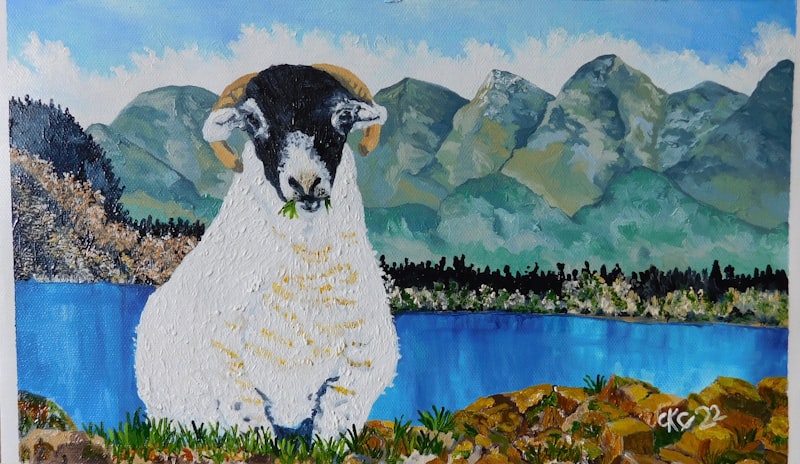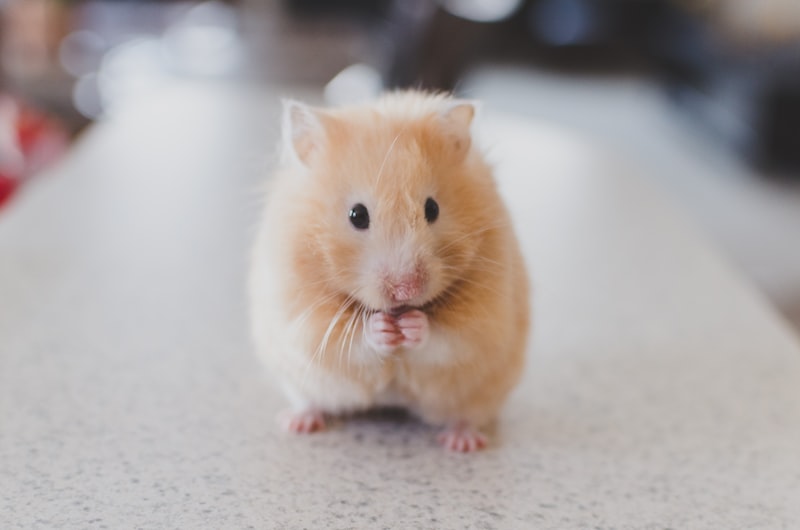
Have you ever wondered about the heroes who dedicate their lives to protecting wildlife? From the dense forests of Africa to the vast oceans, animal conservationists play a crucial role in safeguarding endangered species and their habitats. Let’s delve into the lives and impactful work of some renowned animal conservationists who have made a significant difference in the world.
Jane Goodall, a name synonymous with chimpanzees, revolutionized our understanding of primate behavior through decades of research in Tanzania’s Gombe Stream National Park. Her groundbreaking work not only shed light on chimpanzee social structures but also inspired global conservation efforts.
Dian Fossey, another iconic figure, devoted her life to studying and protecting mountain gorillas in Rwanda’s Virunga Mountains. Her relentless advocacy against poaching and habitat destruction led to the establishment of the Dian Fossey Gorilla Fund International, ensuring the survival of these majestic creatures.
In the realm of marine conservation, Sylvia Earle stands out as a pioneer. Known as “Her Deepness,” Earle’s exploration of the ocean depths revealed the fragile beauty of marine ecosystems. Her advocacy for marine protected areas has been instrumental in preserving ocean biodiversity worldwide.
On the frontlines of tiger conservation is Kailash Sankhala, often called the “Tiger Man of India.” His efforts in establishing Project Tiger, India’s first wildlife conservation initiative, have played a crucial role in reversing the decline of Bengal tigers and their habitats.
What drives these conservationists? It’s a passion ignited by a deep connection to nature and a sense of urgency to protect Earth’s biodiversity. Their stories remind us of the power of individual dedication in combating global environmental challenges.
These conservationists are not just scientists; they are storytellers, activists, and visionaries. Through their tireless efforts, they inspire us to rethink our relationship with nature and take action to preserve the planet for future generations.
Roaring Success: How Jane Goodall Revolutionized Chimpanzee Conservation
Her approach was unconventional yet profoundly effective. Unlike traditional scientists of her time, Goodall immersed herself in the chimpanzees’ world, patiently observing their behaviors and interactions. This intimate approach allowed her to uncover startling similarities between chimpanzees and humans, challenging prevailing notions about the uniqueness of human intelligence and emotions.
One of her most groundbreaking discoveries was that chimpanzees use tools—a revelation that shattered the belief that tool-making was exclusive to humans. Goodall’s meticulous observations documented chimpanzees fashioning tools from sticks to extract termites from mounds, showcasing their remarkable problem-solving abilities.
Beyond scientific discovery, Goodall’s work sparked a global movement for wildlife conservation. Her advocacy efforts brought attention to the plight of chimpanzees and their habitats, inspiring conservation initiatives across the globe. Through her organization, the Jane Goodall Institute, she continues to empower communities to protect wildlife and their environments, ensuring a sustainable future for generations to come.
Goodall’s journey from curious researcher to global conservation icon illustrates the profound impact of individual dedication and perseverance. Her story is not just one of scientific achievement but also of passion, empathy, and the belief that each of us can make a difference in preserving our planet’s biodiversity.
Wildlife Warrior: Steve Irwin’s Legacy of Protecting Endangered Species
Irwin’s journey as a wildlife warrior began in his childhood, shaped by his family’s dedication to caring for injured animals at their Queensland reptile park. His hands-on experience with wildlife fostered a profound connection, igniting a lifelong mission to safeguard endangered species from extinction. With boundless enthusiasm and a fearless approach, Irwin brought attention to the plight of numerous animals facing habitat loss and human threats.
Central to Irwin’s legacy is his advocacy for crocodiles, showcasing their misunderstood nature and advocating for their protection. His televised adventures, characterized by his trademark khaki outfit and infectious enthusiasm, brought viewers up close to creatures often feared and misunderstood. Through educational programs and documentaries, Irwin not only educated the public but also encouraged conservation efforts globally.
Irwin’s impact extended beyond television screens. His establishment of Australia Zoo as a center for wildlife conservation and rehabilitation furthered his mission. The zoo, originally founded by his parents, became a hub for research and breeding programs aimed at preserving endangered species. Irwin’s hands-on involvement in rescue missions and rehabilitation efforts exemplified his dedication to wildlife welfare.
Beyond his conservation work, Irwin’s charismatic personality and genuine passion resonated deeply with audiences of all ages. His ability to connect with people through wildlife, using simple language and relatable anecdotes, made complex conservation issues accessible and compelling.
Today, Steve Irwin’s legacy lives on through the ongoing efforts of his family and the global community of wildlife enthusiasts he inspired. His enduring message of conservation, encapsulated in his famous catchphrase “Crikey!” continues to remind us of the urgency and importance of protecting our planet’s precious biodiversity.
Steve Irwin’s life was tragically cut short, but his legacy as a wildlife warrior endures, a testament to the power of passion and determination in safeguarding endangered species for future generations.
Saving the Giants: Dian Fossey’s Heroic Efforts for Mountain Gorillas
Imagine venturing into the misty mountains of Rwanda, where the dense forest echoes with the gentle rustling of leaves and the occasional call of a distant gorilla. This was Fossey’s world—a world where she immersed herself completely in the lives of mountain gorillas, observing their behaviors, social structures, and challenges they faced in their natural habitat.
Fossey’s journey began with a fascination that evolved into a mission. She arrived in Rwanda in the 1960s, drawn by the allure of these elusive giants. Through her groundbreaking research and fieldwork, she demystified many misconceptions about gorillas, showcasing their intelligence, emotional depth, and complex social interactions. Her studies shattered stereotypes, revealing gorillas not as savage beasts, but as sentient beings with intricate family bonds and individual personalities.
Yet, Fossey soon realized that these remarkable creatures faced grave threats. Rampant poaching and habitat destruction posed existential risks to gorilla populations. Undeterred, she transformed into a staunch advocate and protector. With fearless determination, she exposed poaching networks, fought against illegal hunting, and spearheaded conservation initiatives that challenged the status quo.
Fossey’s work was as daring as it was influential. Her unyielding stance against poachers made her a target, but she refused to back down. Her courage in the face of danger galvanized global support for gorilla conservation efforts, leading to the establishment of the Karisoke Research Center and laying the groundwork for future conservation practices.
Today, Fossey’s legacy endures through the thriving mountain gorilla populations in Rwanda and neighboring countries. Her story reminds us of the power of individual action in safeguarding our planet’s biodiversity. By protecting these gentle giants, Fossey not only secured a future for mountain gorillas but also inspired a worldwide movement for wildlife conservation.
In the misty mountains of Rwanda, where gorillas roam freely, Dian Fossey’s spirit lives on—a testament to the profound impact of one woman’s unwavering dedication to “Saving the Giants.”
The Dolphin Whisperer: Meet Ric O’Barry and His Fight for Marine Mammals
Driven by this experience, O’Barry founded the Dolphin Project, an organization committed to ending dolphin exploitation and captivity worldwide. His mission extends beyond awareness-raising; it involves direct action, investigations, and collaboration with governments and communities to protect dolphins in their natural habitats.
What sets O’Barry apart is his hands-on approach and unwavering dedication. He has traveled the globe, documenting and exposing the realities of dolphin captivity, often risking his safety to shed light on this issue. His efforts have led to significant changes in public perception and policy, influencing the closure of dolphin parks and promoting sustainable ecotourism alternatives.
O’Barry’s story resonates deeply because it’s about more than just saving dolphins; it’s about challenging systemic practices and advocating for animal rights. His fight is a testament to the power of individual action in creating meaningful change. Through his work, he invites us to reconsider our relationship with marine life and encourages us to take responsibility for protecting our oceans and its inhabitants.
Ric O’Barry’s journey as the Dolphin Whisperer is a compelling narrative of transformation and resilience. His tireless advocacy continues to inspire a global movement towards conservation and ethical treatment of marine mammals, leaving an indelible mark on environmental activism.
From TV Star to Conservation Icon: Jeff Corwin’s Impact on Wildlife Preservation
Corwin’s impact on wildlife preservation is multifaceted. Through his television programs, he not only entertained audiences with his adventurous spirit but also educated them about the delicate balance of ecosystems and the plight of endangered species. By bringing the wonders of nature into living rooms worldwide, he sparked a curiosity and empathy for wildlife that continues to resonate.
Beyond television, Corwin has actively engaged in conservation efforts on the ground. He has collaborated with various organizations to support habitat conservation, species recovery programs, and initiatives combating wildlife trafficking. His hands-on approach, whether rescuing endangered animals or advocating for sustainable practices, underscores his commitment to making a tangible difference in the natural world.

One of Corwin’s most significant contributions is his ability to inspire the next generation of conservationists. Through educational outreach and public speaking engagements, he encourages young people to take an interest in environmental stewardship. By instilling a sense of responsibility and wonder for the natural world, he ensures that his legacy extends far beyond his television career.
In essence, Jeff Corwin’s evolution from a TV star to a conservation icon embodies the power of media influence in driving positive change. His unwavering passion for wildlife preservation serves as a reminder of the interconnectedness between humans and the environment. As he continues to advocate for the protection of our planet’s biodiversity, his impact resonates globally, shaping a future where wildlife thrives alongside humanity.
Flight of Hope: The Peregrine Fund and Tom Cade’s Raptor Rescue Mission
Tom Cade, a pioneer in raptor conservation, founded The Peregrine Fund in 1970 with a singular goal: to save the peregrine falcon from extinction. His dedication soon expanded beyond this iconic bird to include a variety of other raptors facing similar threats. Today, the organization stands as a beacon of hope for these majestic creatures, embodying Cade’s unwavering commitment to their protection.
The organization’s approach blends scientific research with hands-on conservation efforts. At their World Center for Birds of Prey in Boise, Idaho, specialists work tirelessly to rehabilitate injured birds and breed endangered species in captivity. This dual strategy not only aids individual birds in need but also contributes to the long-term survival of their species.
The Flight of Hope initiative symbolizes more than just rehabilitation. It represents a collective effort to educate the public about the importance of raptors in our ecosystem. Through outreach programs and educational tours, The Peregrine Fund invites people of all ages to connect with these birds up close, fostering a deeper appreciation for their role in nature.
As these birds take flight once again, guided by The Peregrine Fund’s care and expertise, they serve as ambassadors for their species. Their journey is a testament to the power of dedication and the enduring spirit of conservation. Together, we can ensure that future generations continue to witness the grace and strength of these remarkable creatures, soaring high above the challenges they face.
Underwater Guardians: Sylvia Earle’s Crusade for Ocean Conservation
From a young age, Earle was captivated by the ocean’s wonders. It was a place of endless discovery, teeming with life yet vulnerable to human impact. Over decades of exploration and research, she witnessed firsthand the escalating threats facing marine ecosystems: pollution, overfishing, and climate change. These experiences fueled her determination to become a voice for the oceans.
Earle’s approach is both scientific and deeply personal. She believes in the power of knowledge to inspire action. Through initiatives like Mission Blue, she aims to establish Hope Spots—marine protected areas that serve as havens for biodiversity. Each Hope Spot is a beacon of hope, a promise to future generations that some parts of our oceans can thrive if we give them the chance.
But Earle’s crusade extends beyond scientific research. She understands the importance of storytelling—the need to ignite wonder and concern in people’s hearts. By sharing her adventures and discoveries through books, documentaries, and public speaking engagements, she invites everyone to join her in safeguarding our blue planet.
Imagine the ocean as a vast library of life, each species a book waiting to be read. Sylvia Earle, with her unwavering passion and dedication, is like the librarian, tirelessly organizing and protecting this invaluable collection. Her work reminds us that the fate of our oceans is intertwined with our own—a shared destiny we must strive to protect.
Frequently Asked Questions
Who are some famous animal conservationists?
Discover influential figures in animal conservation with our concise guide to famous animal conservationists. Learn about individuals like Jane Goodall, known for her groundbreaking work with chimpanzees, or David Attenborough, celebrated for his advocacy through documentaries. Explore their impactful contributions to wildlife preservation and global awareness.
How did David Attenborough contribute to global awareness of wildlife conservation?
Discover how David Attenborough’s influential documentaries have heightened global awareness of wildlife conservation. Explore his impactful storytelling that educates audiences worldwide about environmental issues and inspires action for the preservation of our planet’s biodiversity.
What is the legacy of Steve Irwin in wildlife conservation?
Learn about Steve Irwin’s legacy in wildlife conservation, highlighting his pioneering efforts to raise global awareness, conserve habitats, and inspire future generations through his passion for wildlife and educational initiatives.
What are the key contributions of Jane Goodall to animal conservation?
Learn about Jane Goodall’s significant contributions to animal conservation, including pioneering research on chimpanzees, advocacy for wildlife protection, and establishment of conservation programs worldwide.
How did Dian Fossey impact gorilla conservation?
Learn how Dian Fossey’s pioneering research and advocacy significantly advanced gorilla conservation efforts through her intensive study and protection initiatives in Rwanda’s Virunga Mountains.


